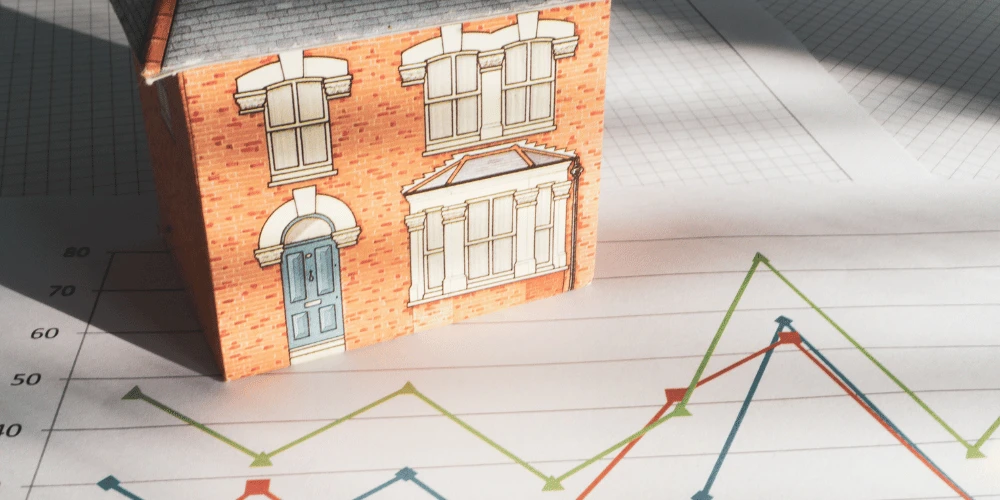Navigating the 2025 Housing Market: Your Complete Roadmap to Smart Home Buying

Introduction to the 2025 Housing Market
Overview of Current Market Conditions and Challenges
The housing market in 2025 presents a mixed bag of opportunities and hurdles for prospective buyers.
On one hand, recent economic recovery has boosted consumer confidence, leading to increased demand for properties.
However, this demand surge is met with limited housing supply, resulting in intensified competition and rising property prices.
Additionally, supply chain disruptions have led to delays in new constructions, further tightening the market.
Buyers also face unique challenges associated with urbanization trends.
Cities are growing rapidly, making urban properties highly sought after and often out of reach for average buyers.
Suburban areas are becoming attractive alternatives, but the increased interest is driving up prices there as well.
Impact of Global Economic Factors on Housing
Global economic dynamics significantly influence the local housing market.
International trade policies, exchange rates, and geopolitical stability play key roles in shaping market conditions.
Trade tensions and tariff wars impact the cost of building materials, thereby affecting housing prices.
Fluctuations in exchange rates can also affect foreign investment in real estate.
Moreover, global pandemics and health crises highlight the need for sustainable urban planning and improved living standards, driving shifts in housing demands.
Thus, prospective buyers need to stay informed about global economic trends and their potential local impacts.
Key Considerations for Prospective Buyers in 2025
Navigating the 2025 housing market requires strategic planning and informed decision-making. Here are some key considerations for buyers:
- 🏠 Interest Rates and Lending Conditions: Monitor interest rates and lending conditions to identify the best time to secure a mortgage. Favorable rates can significantly reduce the overall cost of buying a home.
- 🏠 Government Policies and Regulations: Stay updated on government policies that impact housing. Incentives for first-time buyers, changes in property taxes, and zoning laws can affect buying decisions.
- 🏠 Local Market Trends: Analyze local market trends including property values, rental yields, and vacancy rates. This will help in selecting the right locations for investment or residence.
- 🏠 Sustainability and Smart Home Features: Consider properties with sustainable features and smart home technologies. These are not only environmentally friendly but can also enhance property value over time.
The 2025 housing market is complex and dynamic, requiring buyers to be vigilant, informed, and ready to adapt to changing conditions.
Economic Factors Shaping the Market
Analysis of Interest Rates and Lending Conditions
Interest rates in 2025 are expected to continue their fluctuating pattern, influenced by global economic recovery efforts and inflation control measures.
Prospective homebuyers must stay informed about these rates, as they significantly impact mortgage affordability and monthly payments.
The Federal Reserve’s stance on monetary policy will play a crucial role in determining these rates.
As the economy rebounds, it’s likely we will see gradual rate hikes aimed at stabilizing inflation without stifling growth.
Lending conditions are also evolving, with more rigorous scrutiny and a focus on borrowers’ creditworthiness.
Lenders are prioritizing applicants with stable income sources and strong credit histories.
It’s crucial for buyers to maintain healthy credit scores and secure pre-approval to navigate these tightened conditions successfully.
 Numerous factors help this market
Numerous factors help this market
Influence of Government Policies and Regulations
Government policies and regulations will continue to shape the housing market landscape.
Initiatives aimed at increasing housing supply, such as zoning law reforms and incentives for affordable housing construction, are expected to gain momentum.
Additionally, tax benefits for first-time homebuyers and other housing subsidies can make homeownership more accessible.
However, regulatory challenges, such as property tax hikes or stringent environmental regulations, could impact housing affordability and the pace of construction.
Prospective buyers must stay up-to-date with policy changes at both federal and local levels to make informed purchasing decisions.
Role of International Investment Trends
International investment trends will also have a considerable impact on the 2025 housing market.
With increasing globalization, foreign investors continue to view real estate as a stable and lucrative investment.
This influx of international capital can drive up property prices, particularly in major urban areas.
Conversely, economic or political instability in key investing countries might reduce foreign investment, affecting market dynamics.
To adapt to these trends, homebuyers should monitor global economic indicators and understand how shifts in international investment can influence local real estate markets.
Keeping these economic factors in mind, prospective buyers must be prepared for a dynamic and intricate housing market in 2025.
Staying informed and adaptable will be key strategies for navigating these complex waters successfully.
Whether you’re a first-time homebuyer or an experienced investor, being aware of these economic influences will help you make smarter decisions.
Regional Market Analysis
Comparison of Urban vs Suburban Market Dynamics
The 2025 housing market continues to see distinct dynamics between urban and suburban areas.
Urban markets are characterized by higher property prices, driven by demand for proximity to amenities, workplaces, and cultural experiences.
Limited space and high density contribute to this competitive environment, making urban real estate a premium investment.
In contrast, suburban markets, offering larger homes, more green spaces, and a quieter lifestyle, have attracted buyers seeking affordability and quality of life, especially post-pandemic.
The exodus from cities to suburbs has steadied but remains a significant trend, as remote work remains prevalent.
Emerging Hotspots and Growth Areas
As prospective buyers and investors navigate the market, it’s essential to identify emerging hotspots. Regions with infrastructure developments, such as new transit lines and business hubs, are seeing significant appreciation.
Areas undergoing urban regeneration, with mixed-use developments and tech industry inflows, are also attracting attention.
Suburbs with quality schools, low crime rates, and community amenities are increasingly desirable.
Buyers should keep an eye on these growth areas, as they offer promising returns and a higher quality of life.
Local Market Indicators to Watch
To make informed decisions in 2025, buyers and investors must monitor local market indicators closely. Key metrics include:
- 🏠 Inventory Levels: Low inventory often signals a seller’s market with rising prices.
- 🏠 Days on Market: Shorter times indicate high demand.
- 🏠 Price Trends: Keeping an eye on historical and current price trends helps gauge market stability and future valuation.
- 🏠 Economic Factors: Employment rates and local business growth impact housing affordability and demand.
- 🏠 Government Policies: Zoning changes, property taxes, and incentives can dramatically affect local markets.
Staying informed about these local factors is crucial for navigating the complex regional dynamics of the housing market.
Transitioning from the diverse regional market analysis, understanding how technology intersects with real estate will be instrumental for homebuyers and investors alike.
Investment Strategies for 2025
Long-term vs Short-term Investment Approaches
When investing in the 2025 housing market, you have two primary strategies to consider: long-term and short-term investments.
Each has its own set of advantages and challenges.
Long-term investments, such as purchasing rental properties or fix-and-flip projects, often provide stable income streams and potential for property appreciation over time.
This approach aligns well with investors looking for sustained growth and fewer transactions.
Short-term investments, like buying properties for quick resale, appeal to those seeking faster returns.
These investments can benefit from rapid market fluctuations but inherently come with higher risks.
Buyers must stay informed about the latest market trends and be prepared to act swiftly to capitalize on opportunities.
Risk Assessment and Mitigation Strategies
Understanding the risks associated with real estate investments and developing strategies to mitigate them is crucial.
Key risks include market volatility, changes in interest rates, and local economic conditions.
Prospective investors should:
- 🏠 Conduct thorough market research: Regularly analyze local market trends, demographics, and economic indicators.
- 🏠 Diversify your portfolio: Spread investments across different property types and locations to reduce exposure to any single market shift.
- 🏠 Consult experts: Engage with real estate professionals, such as agents, financial advisors, and inspectors, to inform your decisions.
Implementing these strategies can help protect your investments from unforeseen market downturns.
Diversification Opportunities in Real Estate
Diversification is a vital strategy for managing risk in 2025’s housing market.
Investing in different property types and geographical locations can provide a balanced portfolio that is more resilient to market changes.
Consider these options:
- Residential Properties: Single-family homes, multi-family units, and condominiums offer varied revenue streams through rental income and appreciation.
- Commercial Real Estate: Office spaces, retail properties, and industrial buildings can provide higher returns but may come with greater management challenges and initial costs.
- Emerging Markets: Look for growing areas with strong economic indicators, such as regions undergoing urban regeneration or infrastructural developments.
By diversifying, you can protect your investments from localized economic downturns and capitalize on various market opportunities.
As we advance to the next key considerations for the 2025 housing market, staying informed and adaptable will be essential for success.
Technology and Real Estate
Impact of Digital Innovations on Home Buying
The digital age is transforming the way we buy homes.
With the rise of online platforms, prospective buyers can now explore countless properties without ever stepping outside their homes.
These platforms offer comprehensive listings, complete with high-resolution photos, detailed descriptions, and neighborhood insights, making the initial stages of home buying far more accessible and less time-consuming.
Role of Virtual Tours and Online Platforms
Virtual tours have revolutionized the home buying process.
Utilizing 3D technology, these tours allow buyers to virtually walk through properties, providing a realistic sense of the space and layout.
This innovation is particularly valuable for out-of-town buyers or those with tight schedules.
Furthermore, online platforms streamline the buying process by offering tools for arranging viewings, submitting offers, and even completing transactions digitally.
Emergence of Smart Home Technologies
Smart home technologies are becoming increasingly popular and sought after in the housing market.
These technologies include integrated systems for controlling lighting, security, heating, and appliances from a smartphone or voice-activated assistant.
Homes equipped with smart technology not only offer convenience and energy efficiency but also increase property value and appeal to tech-savvy buyers.
As technology continues to advance, staying informed and adaptable will be key to navigating the 2025 housing market.
Consistently integrating new digital tools and platforms will ensure a smoother, more efficient home buying experience.
Financing Options and Considerations
Available Mortgage Products and Terms
Navigating the world of mortgage options in 2025 can feel a bit daunting, but having a grasp on what’s out there can make a huge difference.
There are several types of mortgage products to consider:
- 🏠 Fixed-Rate Mortgages: These continue to be popular, offering consistent monthly payments and interest rates that do not change over the life of the loan.
- 🏠Adjustable-Rate Mortgages (ARMs): These start with lower rates that can adjust after a certain period, potentially saving money if interest rates remain steady or decline.
- 🏠 Federal Housing Administration (FHA) Loans: Ideal for first-time buyers, these loans have lower down payment requirements and more lenient credit criteria.
- 🏠 Veterans Affairs (VA) Loans: Exclusively for veterans and their families, VA loans offer competitive interest rates, no down payment options, and no private mortgage insurance.
- 🏠 Jumbo Loans: These exceed the conforming loan limits set by the Federal Housing Finance Agency, catered to those looking to purchase high-value properties.
Understanding the terms of these products, such as the length of the loan, points, and any pre-payment penalties, is crucial in determining which product best suits your financial situation and homeownership goals.
Understanding Lending Criteria and Requirements
Lending criteria have evolved in response to market conditions and economic factors. Key aspects lenders scrutinize include:
- 🏠 Credit Score: Higher credit scores open the door to better rates and terms. Scores above 700 are often considered good, while those above 750 are excellent.
- 🏠 Income and Employment History: Lenders look for stable and sufficient income to support mortgage payments. Employment history and current job status are essential factors.
- 🏠 Debt-to-Income Ratio: This ratio calculates the percentage of your monthly income that goes towards debt payments. A lower ratio indicates better ability to manage monthly payments, with lenders generally seeking ratios below 43%.
- 🏠 Down Payment: While some loans require as low as a 3.5% down payment, providing a higher down payment can lower your monthly payments and save on interest over time.
- 🏠 Assets and Savings: Demonstrating sufficient savings and assets can provide a safety net for lenders, giving them confidence in your financial stability.
Strategies for Securing Favorable Financing
Securing the best financing requires strategic planning and preparation. Consider these tips:
- Improve Your Credit Score: Pay down debts, correct any inaccuracies on your credit report, and refrain from opening new credit accounts before applying for a mortgage.
- Save for a Larger Down Payment: The more you can put down initially, the better your loan terms will generally be.
- Shop Around: Don’t settle for the first offer. Compare rates, fees, and terms from multiple lenders to find the best deal.
- Consider Loan Points: Paying for points upfront can reduce your interest rate over the life of the loan, which might be beneficial if you plan on staying in your home long-term.
- Stay Employed and Show Stability: Maintaining a steady job or income source during the application process can enhance your credibility with lenders.
Successfully navigating these elements can result in more favorable financing terms, ensuring you get the best deal possible for your new home.
With a solid understanding of financing options and strategies, prospective buyers can confidently enter the housing market and make informed decisions.
In the rapidly changing landscape of real estate, staying informed and adaptable is key.
Future Market Predictions
Projected Market Trends for 2025 and Beyond
As we look ahead to 2025, the housing market is expected to continue evolving, influenced heavily by technological advancements, economic shifts, and changing buyer preferences.
Emerging trends indicate an increase in demand for homes equipped with smart technologies.
Buyers are gravitating towards properties that offer benefits such as energy efficiency, enhanced security, and automation.
These features not only improve convenience but also align with broader sustainability goals.
Another significant trend is the growing interest in suburban and rural areas.
This shift is partly driven by the increased flexibility of remote work, allowing homeowners to prioritize space and quality of life over proximity to urban centers.
Consequently, suburban markets are likely to see higher appreciation rates, presenting opportunities for both homeowners and investors.
Potential Challenges and Opportunities
The 2025 housing market will face several challenges. Rising interest rates and tighter lending conditions may make mortgages less affordable for some buyers.
Additionally, inflationary pressures and supply chain disruptions could contribute to increased construction costs, affecting housing supply and prices.
However, these challenges also present opportunities. Savvy investors can adapt by exploring underdeveloped areas with growth potential.
Innovations in construction technology, such as modular homes, could offer cost-effective solutions to the housing supply issue.
Moreover, government incentives for sustainable and affordable housing developments may provide further investment opportunities.
Strategic Planning for Future Market Conditions
To navigate the 2025 housing market effectively, strategic planning is essential.
Prospective buyers and investors should consider long-term sustainability and potential value appreciation when making decisions.
Emphasizing properties that incorporate smart home technologies and energy-efficient designs can enhance future resale values.
Diversification remains a key strategy. Investing in a mix of urban, suburban, and rural properties can hedge against market volatility.
Additionally, keeping an eye on local economic indicators, such as job growth and infrastructure developments, can help identify promising opportunities.
As the market evolves, staying informed about economic policies and regulations will be crucial.
Adapting to changes in government policies, such as tax incentives for sustainable housing, can enhance financial planning and investment strategies.
Transitioning from these predictions and strategic considerations, future discussions will delve into practical steps homebuyers can take to prepare and succeed in this dynamic market.
Practical Steps for Homebuyers
Essential preparation checklist for buyers
Buying a house in 2025 can be a thrilling yet complex journey. Here’s an essential checklist to get you started:
- Assess Your Finances: Determine your budget by evaluating your income, savings, and expenses. Check your credit score and address any issues that might affect your mortgage eligibility.
- Get Pre-approved for a Mortgage: This step involves getting a lender to review your financial status and issue a pre-approval letter. It gives you a clear idea of how much you can borrow and strengthens your position as a serious buyer.
- Define Your Needs and Wants: List your non-negotiable requirements and desirable features. Consider factors like location, size, amenities, and future resale value.
- Research the Market: Understand the local market trends by reviewing recent sales data, price fluctuations, and emerging hotspots. This knowledge will help you make informed decisions.
- Engage a Real Estate Agent: A trustworthy agent can provide invaluable insights and assist you through the entire process, from property search to closing.
- Inspect and Appraise: Hire professionals for home inspections and appraisals to ensure the property is in good condition and fairly priced.
Navigating the buying process effectively
To navigate the buying process effectively, follow these sequential steps:
- Start Your Search: Use online platforms, real estate apps, and open houses to explore available properties. Create alerts for new listings that match your criteria.
- Visit Listings: Schedule visits to the properties you’re interested in. Take notes and photos to compare later.
- Make Offers Wisely: When you find the right property, work with your agent to craft a compelling offer. Be prepared for negotiations with the seller.
- Conduct Due Diligence: Once your offer is accepted, proceed with due diligence, including thorough inspections and reviewing all disclosures.
- Secure Financing: Finalize your mortgage application, lock in your interest rate, and prepare for the underwriting process.
- Close the Deal: Review and sign all necessary documents at the closing meeting. Ensure you’ve secured home insurance and transferred utilities.
Key factors in decision-making
When making a decision, consider these key factors:
- Location: Proximity to work, schools, amenities, and transportation can greatly impact your quality of life and property value.
- Property Condition: Beyond aesthetics, examine the structural integrity, age of major systems, and potential renovation costs.
- Market Conditions: Assess whether it’s a buyer’s market or a seller’s market. This will affect your negotiating power and the urgency of making an offer.
- Future Resale Value: Consider the property’s potential for appreciation. Look into community development plans and local economic conditions.
- Total Cost of Ownership: Account for ongoing expenses like mortgage payments, property taxes, insurance, maintenance, and utilities.
With these steps and factors in mind, you’ll be better equipped to make a smart, informed home purchase in 2025.
Stay patient, diligent, and adaptable as you navigate the market.






